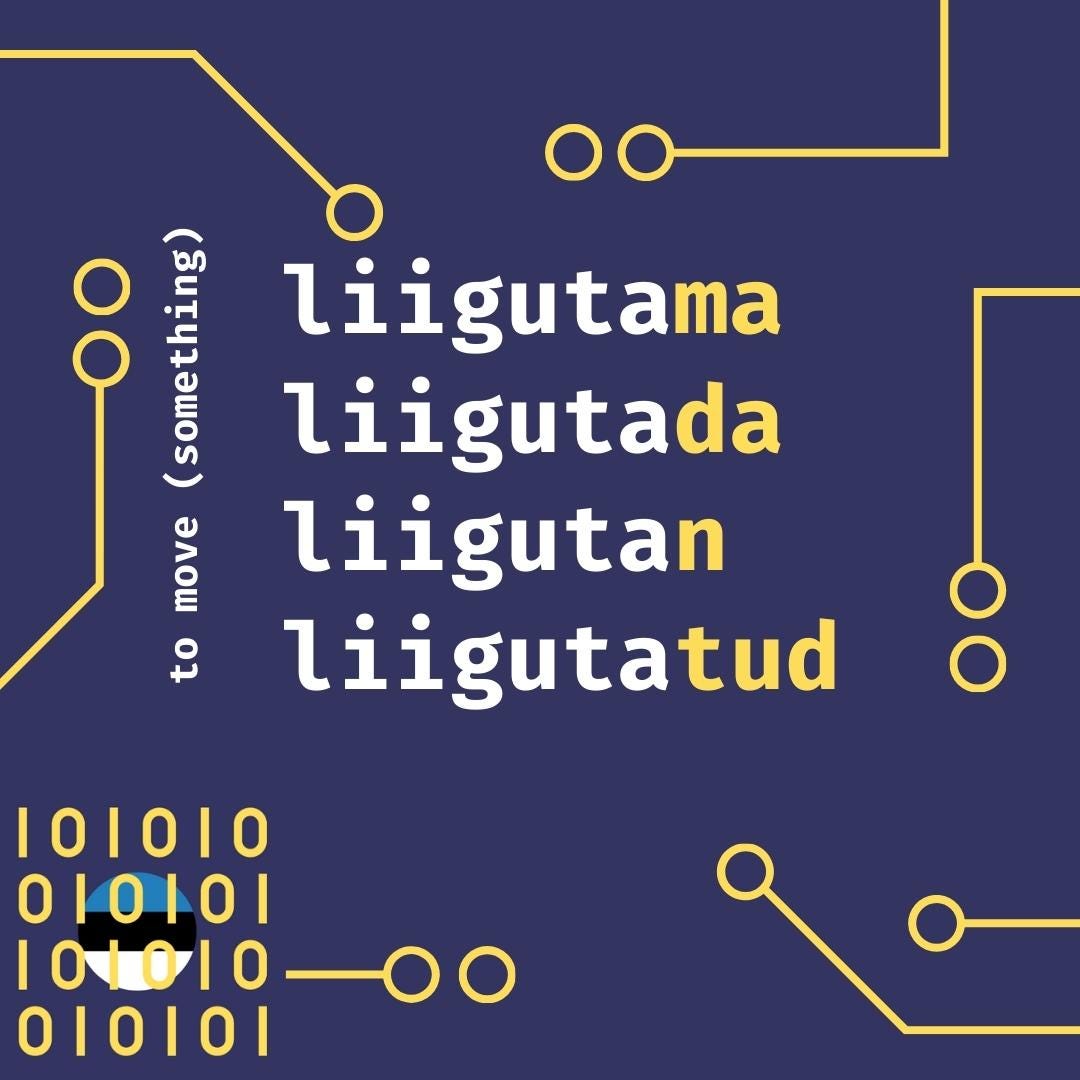Vocab: liigutama
to move (something)
to move (something), to change the position of himself or something
Building blocks
liigu- move
-ta- factitive (“make something be X”)
-ma - infinitive ending
The Estonian word "liigutama" is derived from the Proto-Finnic root *liikka-, which means "to move".
The Estonian words "liikuma" and "liigutama" are both related to the concept of movement, but they have different meanings.
Liikuma is a verb that means "to move". It describes the act of moving, without specifying who or what is moving. For example, "Pall liigub" means "The ball moves".
Liigutama is a transitive verb that means "to move something". It describes the act of causing something to move. For example, "Laps liigutas palli" means "The child moved the ball".
In other words, "liikuma" describes the movement itself, while "liigutama" describes the act of causing movement.
How to use it
To move something literally:
Liiguta oma autot! (Move your car!)
Ta liigutab oma lihaseid. (He is moving his muscles.)
In a more figurative sense it means "to affect" something:
See film liigutas mind väga. (This film moved me very much.)
What to note about the word liigutama:
What or whom you move is in the Partitive case (third base form).
Examples
Ma ei liigutanud su mantlit
Literally: “I didn’t move your coat”
Ma - Pronoun - Nom Sg, "I"
ei liigutanud - 1P Past Sg, "didn't move"
su - Pronoun - Genitive Sg, "your"
mantlit - Noun - Partitive Sg, "coat"Presidendi sõnad liigutasid rahvast
Literally: “President’s words moved nation”
Idiomatically: “The president’s words moved the nation”
Presidendi - Noun - Genitive Sg, "President's"
sõnad - Noun - Nom Pl, "words"
liigutasid - Verb - 3P Past Pl, "moved"
rahvast - Noun - Partitive Sg, "nation"

